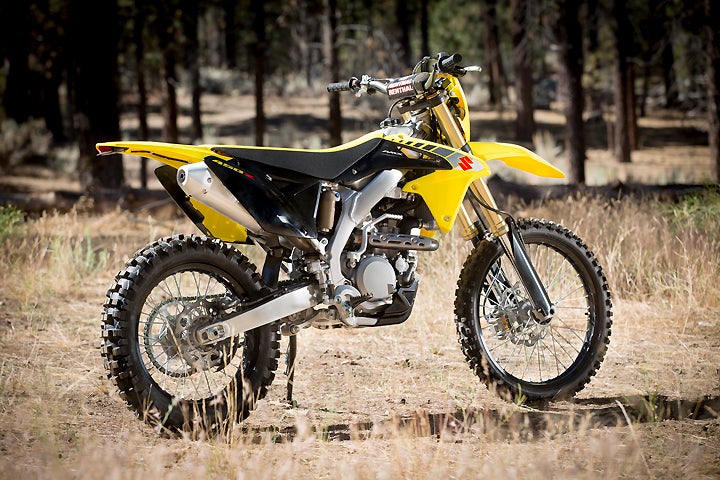
Sixteen horsepower. Sixteen.
For most 450cc motocross and off-road models, making 16 horsepower would mean that the exhaust pipe was smashed flat or the engine was suffering some sort of catastrophic failure. Yet right out of the crate, according to Suzuki officials we spoke to, the EPA-legal 2017 Suzuki RMX450Z makes around 16 horsepower at the rear wheel.
What the…? Why would Suzuki even bother to produce and sell an off-road machine, especially a 450cc model that makes such anemic power? Well, the answer is that it does and it doesn’t. Welcome to the wonderful world of EPA emissions compliance.
A Short History Lesson
The first model to receive the RMX designation appeared in 1989. 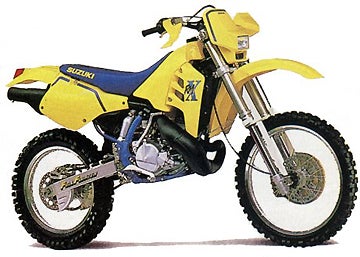
With its off-road-oriented features such as convenient electric start an 18-inch rear wheel the RMX450Z had the makings of a successful model, but instead it turned out to be a huge thorn in Suzuki’s side thanks to the EPA’s strict emissions regulations governing off-road motorcycles used on public land. While the RMX450Z did contain an emissions-compliant stock ignition map, Suzuki also made the blunder of fitting it with the same plug-in engine control module connector that allows RM-Z450 owners to swap engine maps. The ability to bypass the stock map ran Suzuki afoul of EPA regulations, and the company got slapped with a hefty fine—rumored to be in the neighborhood of $850,000. The RMX450Z was quickly pulled from Suzuki’s lineup after very few units were sold.
And Here We Are…
Now the RMX450Z is back for 2017, though it is basically the same motorcycle as the 2010 model. Suzuki has refined the ignition mapping to be EPA-compliant and, they say, tamper-proof, but the rest of the motorcycle is the same two generations-old (in RM-Z years) machine. Ironically, even the engine control module connector is still in place, although Suzuki says that it is not functional.
So why bring back the same machine six years later? Suzuki officials told us that the RMZ450 fills a need in the company’s off-road lineup for customers who want to ride off-road but don’t necessarily want to race. As an EPA- and California Green Sticker-legal model, the RMX450Z can be trail ridden on public land. It even comes with a very non-competition motorcycle-like six-month warranty rather than the usual 30-day warranty that is attached to the RM-Z models.
To make sure that we knew the exact details regarding the 2017 RMX450Z, Suzuki invited us to a lengthy tech briefing before releasing our test unit to us. As we suspected after getting over the bombshell revelation of that ridiculously low horsepower number, all is not as it seems.
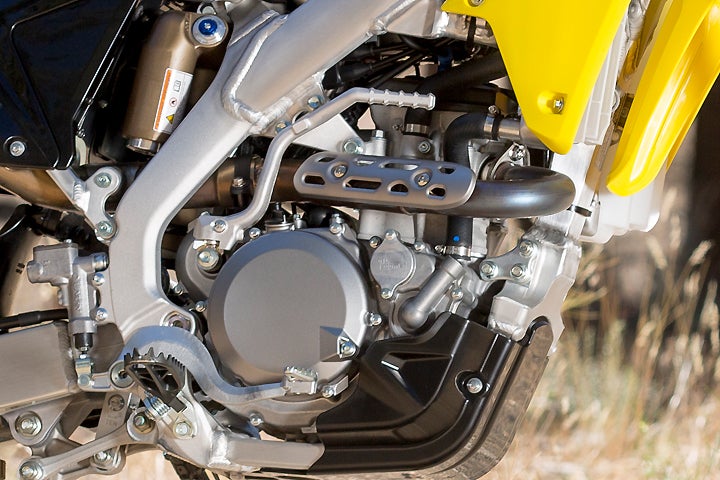
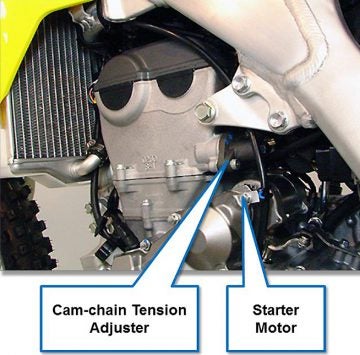 The RMZ450Z’s basic liquid-cooled, fuel-injected, DOHC engine architecture is similar to that of the RM-Z450’s albeit the 2010 version of the bike. Displacement is 449cc via a 96.0 x 62.1mm bore and stroke. However, the RMX450Z’s engine layout is different than the current generation RM-Z450 in a few areas, such as in the location of the cam chain tensioner, which is on the cylinder head and not on the cylinder as it is on the RM-Z. Doing so frees up the necessary room to fit the RMX450Z’s electric starter. There’s still a kickstarter for back-up, and Suzuki says that even if the battery is run completely out of juice, there is a capacitor in the system that will generate enough energy to fire up the RMX with the kickstarter, so a rider should theoretically never be stranded if he or she accidentally leaves the main power switch that arms the electrical system in the “on” position.
The RMZ450Z’s basic liquid-cooled, fuel-injected, DOHC engine architecture is similar to that of the RM-Z450’s albeit the 2010 version of the bike. Displacement is 449cc via a 96.0 x 62.1mm bore and stroke. However, the RMX450Z’s engine layout is different than the current generation RM-Z450 in a few areas, such as in the location of the cam chain tensioner, which is on the cylinder head and not on the cylinder as it is on the RM-Z. Doing so frees up the necessary room to fit the RMX450Z’s electric starter. There’s still a kickstarter for back-up, and Suzuki says that even if the battery is run completely out of juice, there is a capacitor in the system that will generate enough energy to fire up the RMX with the kickstarter, so a rider should theoretically never be stranded if he or she accidentally leaves the main power switch that arms the electrical system in the “on” position.
The RMX features a clutch switch safety switch that prevents the machine from engaging the starter unless the clutch lever is pulled. A starter relay under the left-hand frame cover temporarily cuts power to the headlight and taillight to help ensure that all the available electrical power is going to the starter. The starter motor is connected to a starter torque limiter on the back of the rotor, so if anything should happen to prevent the engine from turning over smoothly, the torque limiter clutch will spin and not allow the starter’s torque to potentially cause further damage.

While the shape of the RMX’s cast-aluminum, four-valve cylinder head and that of the older RM-Z are the same, the off-road machine features camshafts with less lift and duration than the motocrosser, although those cams still bump titanium valves just like the RM-Z—36mm intakes and 31mm exhausts. The total included valve angle is 21.5 degrees (11.5 degrees on the intake side and 10 degrees on the exhaust side). To aid the electric starter, the RMX is also fitted with an automatic decompression system on its exhaust cam that will hold the left exhaust valve open, relieving compression until the crankshaft is spinning to about 1500 rpm.
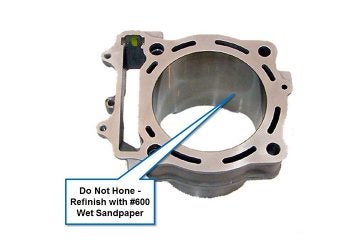 Suzuki’s Composite Electro-chemical Material (SCEM) coating lines the RMX’s cylinder. SCEM is a proprietary, plasma-style finish that was originally concocted for Suzuki’s RE5 Wankel rotary engine-powered streetbike from the 1970s. Its piston has two rings, an L-shaped upper compression ring and a three-piece lower oil control ring. The piston’s compression ratio is nearly a full point lower than the RM-Z’s checking in at 11.6:1 versus the RM-Z’s 12.5:1 slug. The RM-Z piston can be used by customers seeking higher compression and thus more power.
Suzuki’s Composite Electro-chemical Material (SCEM) coating lines the RMX’s cylinder. SCEM is a proprietary, plasma-style finish that was originally concocted for Suzuki’s RE5 Wankel rotary engine-powered streetbike from the 1970s. Its piston has two rings, an L-shaped upper compression ring and a three-piece lower oil control ring. The piston’s compression ratio is nearly a full point lower than the RM-Z’s checking in at 11.6:1 versus the RM-Z’s 12.5:1 slug. The RM-Z piston can be used by customers seeking higher compression and thus more power.
The RMX’s crankshaft is different than the RM-Z due to the electric start feature; the left side journal is longer to accommodate a starter clutch and a larger rotor for the charging system. Suzuki officials say that the larger rotor delivers 250 Watts of power, more than enough to light the RMX’s 35-Watt halogen headlight and LED taillight with plenty left over to add additional or more powerful accessory lighting. One side benefit to the rotor is that also offers some additional flywheel effect for improved low-speed tractability.
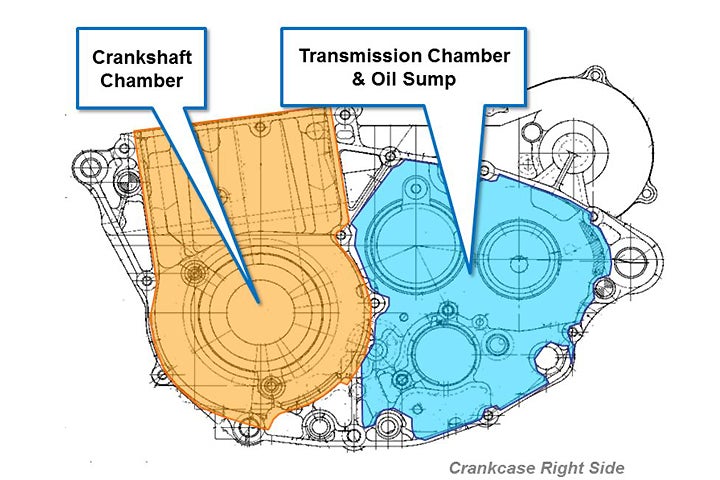
The crank is housed in engine cases that feature a separate oil chamber than the transmission. Suzuki calls the design the Suzuki Advanced Sump System (SASS). It’s a semi-dry sump lubrication system in which the sump tank is the transmission chamber portion of the crankcase. The system is designed to help keep oil away from the crankshaft, where it could cause power-robbing windage, a condition in which friction is caused between the oil and the air movement from the spinning crankshaft. The less oil that is being batted around by the crank, the better. The design also helps to ensure that there’s an adequate supply of oil in the sump.
There are two oil pumps in the RMX’s cases, one feeding the top end and the other handling the bottom end oiling chambers. Engine oil capacity is 1.25 quarts, and Suzuki says that the bike’s oil should be replenished with the motorcycle standing upright on level ground to avoid over-filling. The RMX is equipped with a crankcase breather that vents into the airbox, another EPA-mandated move for emissions compliance.
Fuel capacity is rather small 1.6 gallons with a reserve tank that measures about .06 of a gallon. A tank-mounted fuel pump delivers fuel to the RMX’s Keihin 41mm throttle body at 40 psi. The pump also features a fuel level sensor that will trip a light on the RMX’s instrumentation when the “go juice” is running low.
Suzuki likes to claim that it pioneered the electronic fuel-injected motocross bike, and as long as we’re willing to ignore the ATK 350/604 EFI of the early 1990s and the ill-fated and short-lived Cannondale MX440 of 2001-2003, then, yeah, it did. Either way, the RMX features EFI controlled by an engine control module located under the left side panel. Unlike the 2010 RMX, and for the aforementioned emissions compliance reason, the 2017 model features a single-map ECM, although Suzuki officials claim that the 2017 map is highly refined and gives better performance than the stock map found on the 2010 model. The EFI features sensors that determine intake air pressure, engine rpm and throttle position as well as coolant temperature sensors that determine the duration of the fuel-injection to optimize the fuel charge into the engine—the longer the duration, the richer the fuel mixture.
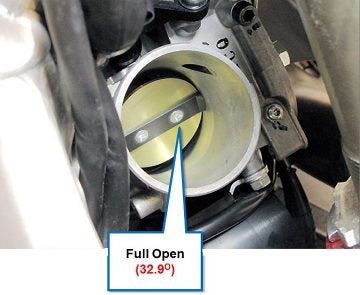 About that 41mm Keihin throttle body: It naturally houses the throttle plate and the injector, and it also houses a plunger that can be rotated to set the engine idle speed (the hot start lever is located on the left handlebar by the clutch lever). To meet EPA certification, the throttle plate only opens 32.9 degrees from fully closed(!), but the reason for that is because Suzuki fitted a stopper bolt on the throttle housing to prevent the throttle plate from opening to its full 90 degrees at wide open throttle.
About that 41mm Keihin throttle body: It naturally houses the throttle plate and the injector, and it also houses a plunger that can be rotated to set the engine idle speed (the hot start lever is located on the left handlebar by the clutch lever). To meet EPA certification, the throttle plate only opens 32.9 degrees from fully closed(!), but the reason for that is because Suzuki fitted a stopper bolt on the throttle housing to prevent the throttle plate from opening to its full 90 degrees at wide open throttle.
Cutting To The Chase
The throttle stop bolt is removable…but doing so takes the RMX450Z out of compliance with the EPA sound (but not emissions) regulations under which it was certified. The RMX450Z also features a lid with a snorkel on top of the airbox and a sound reducer in its spark arrestor-equipped aluminum muffler. Like the throttle stop bolt, both are removable… but doing so takes the RMX450Z out of compliance with the EPA sound and emissions regulations while simultaneously boosting the RMX’s horsepower into the 40s…Any questions?
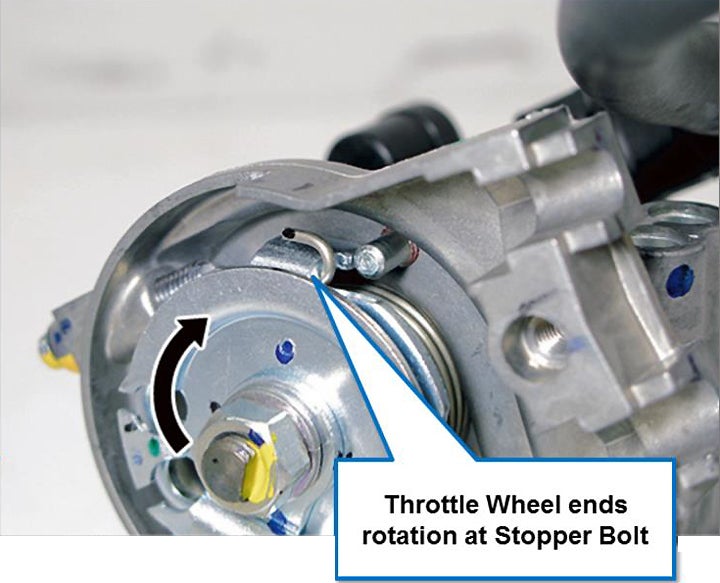
It’s the plain truth that no Suzuki official we spoke to encouraged any such modification of the RMX450Z for use on public land. And, no matter what, Suzuki adamantly advises against removing the spark arrestor in an effort to gain performance, as doing so will cause the bike to run too lean. Running too lean will generate excess engine heat and could lead to damage. As for the rest, once the dealer delivers you the RMX450Z in its stock, EPA- and California Green Sticker-compliant form—the only way a dealer can sell it to you without incurring the wrath of Suzuki and/or the government—the bike is yours to modify in any way you see fit for closed-course riding and racing.
More Details
Since it is more likely to be ridden in the woods and the desert on a motocross track, the RMX450Z features completely different transmission ratios than the RM-Z450. The first three gears are shorter than the motocrosser while fourth and fifth gear are taller. The RMX450Z’s final drive is also slightly steeper, 13/51 vs. 13/50.
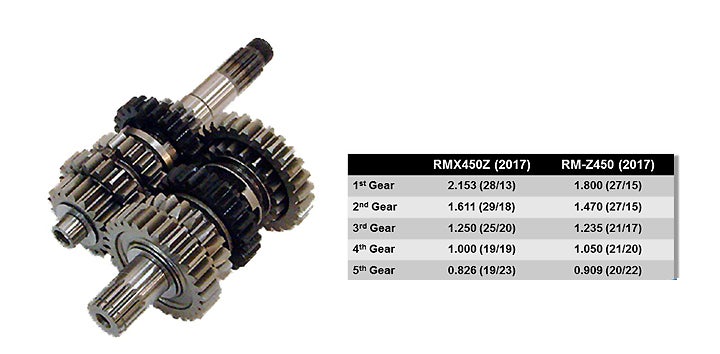
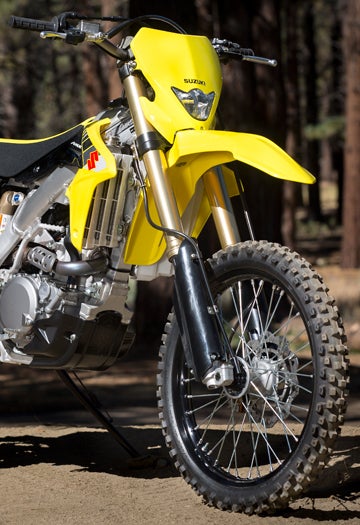 Like much of the rest of the bike, the RMX450Z’s aluminum twin spar chassis is similar to the 2009-2010 RM-Z450, but it has been re-tuned to give better flex characteristics for off-road use. Front suspension chores are handled by a Showa coil-spring fork (no air), and the rear shock is also a Showa that is adjustable for high- and low-speed compression, rebound and preload. Both ends boats 12.2 inches of travel. The RMX’s aluminum swingarm is taller vertically than the RM-Z’s when viewed from the side. Suzuki says the RMX swingarm is shaped to help the chassis achieve its desired flex characteristics.
Like much of the rest of the bike, the RMX450Z’s aluminum twin spar chassis is similar to the 2009-2010 RM-Z450, but it has been re-tuned to give better flex characteristics for off-road use. Front suspension chores are handled by a Showa coil-spring fork (no air), and the rear shock is also a Showa that is adjustable for high- and low-speed compression, rebound and preload. Both ends boats 12.2 inches of travel. The RMX’s aluminum swingarm is taller vertically than the RM-Z’s when viewed from the side. Suzuki says the RMX swingarm is shaped to help the chassis achieve its desired flex characteristics.
Excel rims are found front and rear, in the appropriate off-road-sized 21-inch front and 18-inch rear with wave-style rotor disc brakes front and rear, and Dunlop D742FA front and D756 rear tires. The front wheel is an RMX-specific model because it contains the sensor required for the multi-function LCD computer, which features two modes, standard and sport. Standard mode functions include a speedometer, odometer, clock, dual trip meters and a voltage meter. Sport mode adds a timer, average speed and a trip meters.
The RMX’s bodywork is similar to but does not interchange with the RM-Z450’s. The RMX also comes with a plastic skid plate, rear disc and rotor guards, fork guards and a steel side stand as standard equipment.
That’s the hows and whys of the 2017 Suzuki RMX450Z. Stay tuned for a full test of the 2017 RMX450Z in both EPA-compliant and closed-course trim in the very near future.
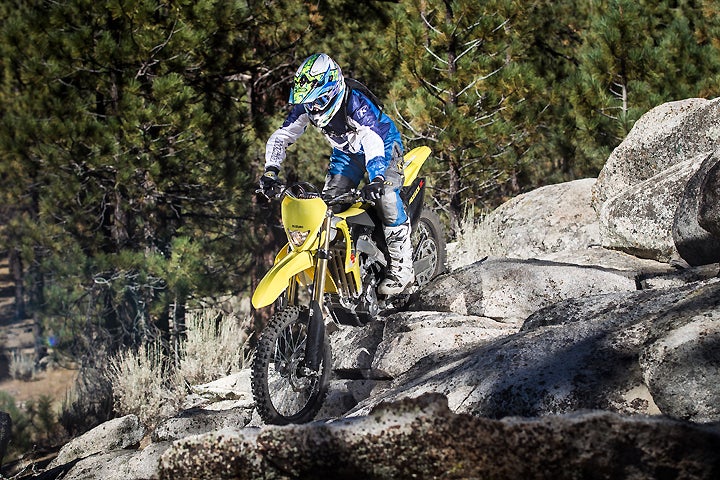
 Your Privacy Choices
Your Privacy Choices